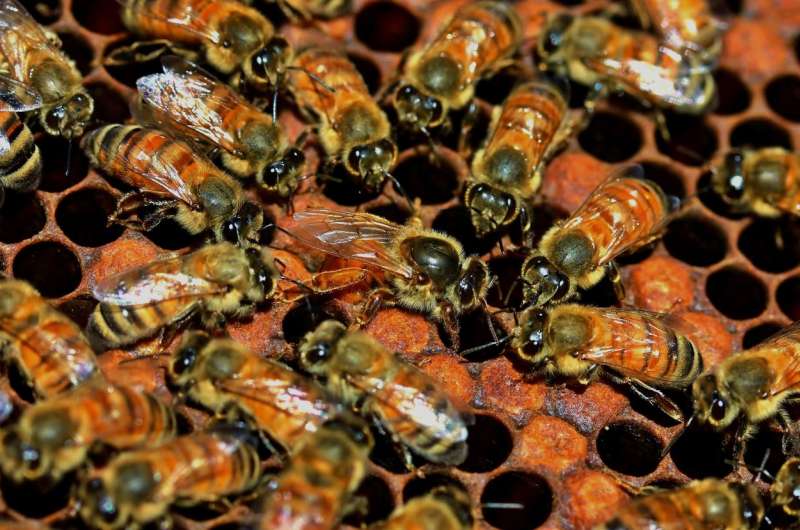Worker bees select royal (sub)family members, not their own supersisters, to be new queens

When honey bees need a new emergency queen, they forego the chance to promote members of their own worker subfamilies, opting instead to nurture larvae of "royal" subfamilies, according to a study published July 11 in the open-access journal PLOS Biology by James Withrow and David Tarpy of North Carolina State University in Raleigh.
When a queen suddenly dies, workers must select a group of larvae to raise as emergency queens, so the question arises whether workers tend to select larvae of their own subfamily over those of others, thus promoting their own genes at the expense of those from other subfamilies.
Here, the authors examined DNA from an average of 92 workers and 85 emergency queens from 6 different colonies. They found that the number of subfamilies per colony ranged from 34 to 77, vastly outnumbering previous estimates. By comparing the DNA of the emergency queens to that of the colony's subfamilies, they found that the majority of emergency queens were raised from subfamilies with very few members, many of which are so rare that they are mostly undetected in typical colony sampling of workers. Thus the authors argued, workers chose members of other "royal" subfamilies over their own "supersisters" to become new queens.
The characteristics that distinguish these lucky larvae from their hive mates are still unknown, as are many of the factors in play that override a possible "selfish gene" drive that might otherwise reward choosing one's own family members for the royal treatment. "While many of the specific details and mechanisms are still to be determined," Withrow said, "at this point we may safely conclude that, while inclusive fitness for nepotism may favor the individual level during emergency queen rearing, that advantage is profoundly overridden by opposing selective forces acting at multiple levels favoring cooperation and altruism."
The study strengthens the evidence that "the good of the hive" overpowers the narrow genetically selfish interests of individual workers.
Withrow adds: "While we already knew that honey bee queens mate with a large number of drones to bring genetic diversity into their colonies, this study suggests that many of a queen's mates are fathering only a tiny fraction of her total offspring. But workers are preferentially selecting members of these cryptic subfamilies for rearing into new queens."
More information: Withrow JM, Tarpy DR (2018) Cryptic "royal" subfamilies in honey bee (Apis mellifera) colonies. PLoS ONE 13(7): e0199124. doi.org/10.1371/journal.pone.0199124
Journal information: PLoS Biology , PLoS ONE
Provided by Public Library of Science




















